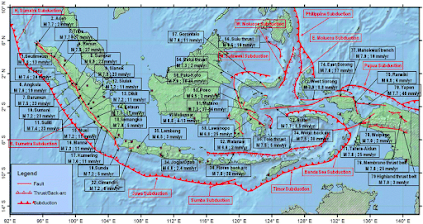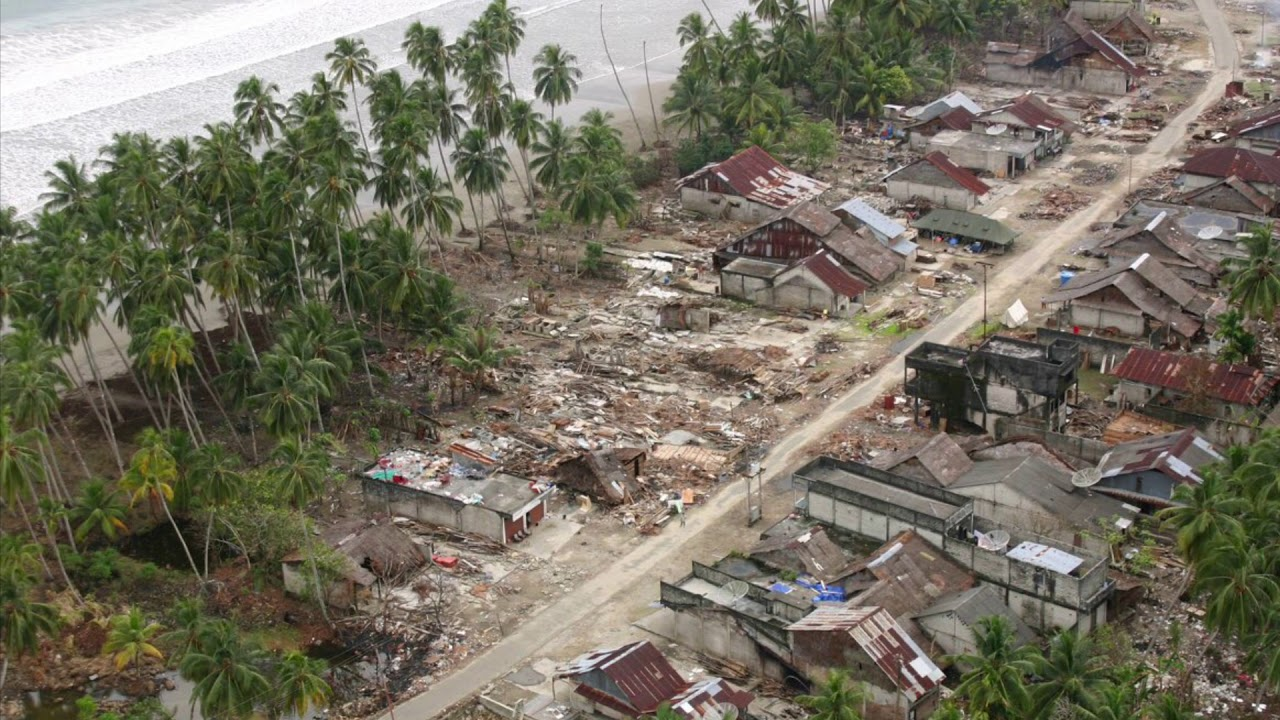Week 3 - Earthquakes
Indonesia is one of the most seismically active countries in the world. This is due to its situation on top of multiple plate boundaries and its location within the ring of fire. The country experiences thousands of earthquakes of varying magnitudes each year, with about 320 events with a magnitude of 5 or more and about 3 events with a magnitude of 7 or more annually. Most of Indonesia's earthquakes are shallower, occurring no deeper than 70 km, but deeper earthquakes are not uncommon. Indonesia's seismic activity is heavily concentrated at or near plate boundaries and increase in depth at major subduction zones.
The largest earthquake to occur in Indonesia was the 2004 Sumatra-Andaman Earthquake. This undersea megathrust earthquake had a magnitude of 9.1-9.3 and reached up to a IX on the Mercalli scale in some areas. It was caused by a rupture along the fault between the Eurasian and Indo-Australian plates and it triggered a devastating tsunami. According to the US Geological Survey a total of 227,898 people in 14 countries were killed as a result of the earthquake and subsequent tsunami. Indonesia was the worst affected country with an estimated 170,000 people killed, 500,000+ people displaced, and about $4451.6 million in damages.
Indonesia normally spends between $300-$500 million every year dealing with the aftermath of various natural disasters, which takes a toll on the developing country. The government has acknowledged that there are serious issues with post-disaster funding and aid, as well as a general lack of awareness and education regarding natural hazards. Despite the country's Seismic Resistance Design Standard for Buildings, it is not heavily enforced, and many structures are not up to code. Poorer communities tend to be hit harder by disasters because they have less insurance protection and less ability to afford to invest in higher quality materials, better building design, and better construction methods that would be sufficient in withstanding disasters. Indonesia currently has 170 seismic broadband stations, 238 accelerometer stations, and 137 tidal gauges throughout the region, but their maintenance budget is very limited.
Sources:






Great seismic reflection!- Congratulations.
ReplyDelete